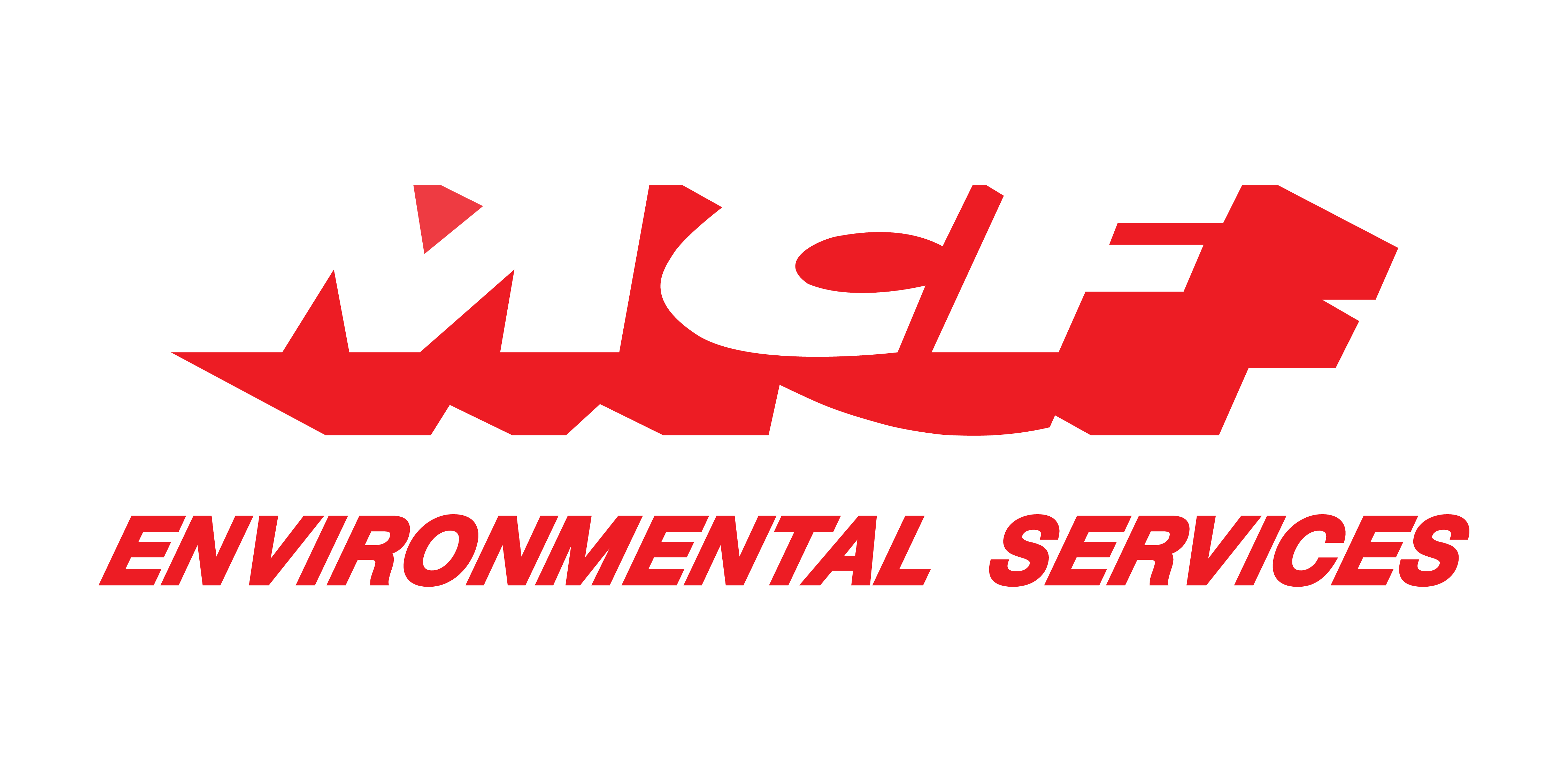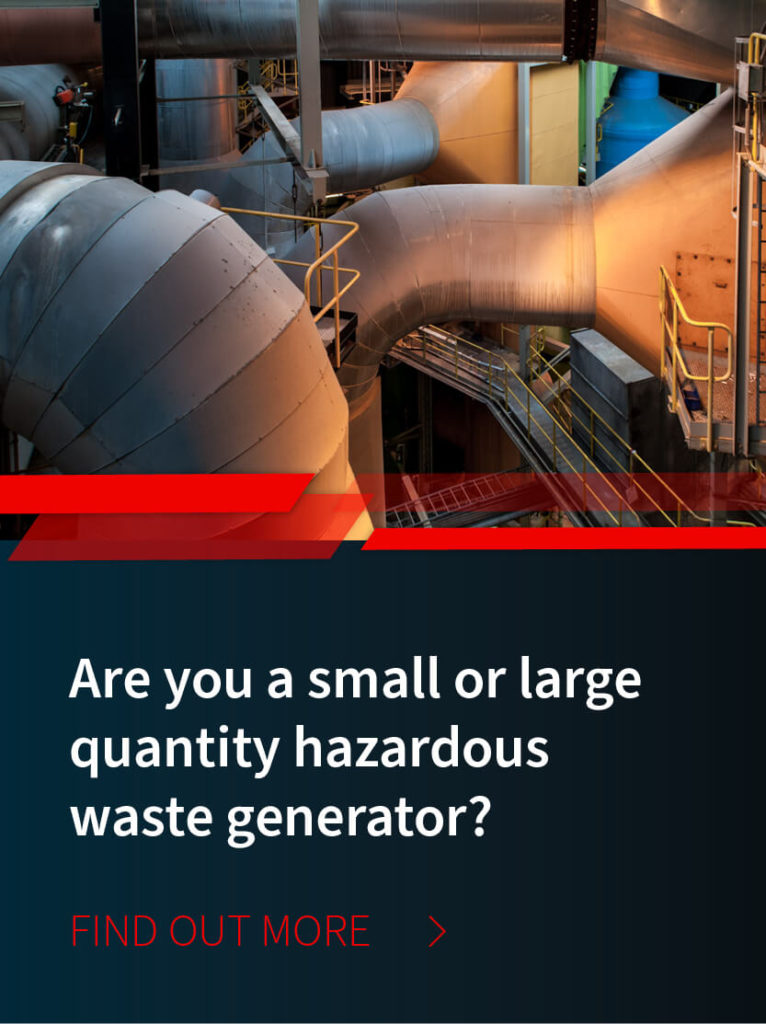
/ IN THIS BLOG
For organizations operating in one of the many industries that generate waste, it is more than likely that you have heard of the terms “shipping manifest” and “bill of lading.” These two terms are often used in the same contexts and are easily mistaken for one another. However, the fact is that these terms represent two very distinct documents, and an understanding of what they are and how they are used is critical for ensuring your organization is compliant with state and federal regulations.
01 / What Is a Manifest and a Bill of Lading?
When it comes to hazardous waste management, there are many laws and regulations stipulating the exact procedures to follow. These procedures must be followed from the moment waste is generated to its final destruction. It is crucial to keep in mind that where hazardous materials are concerned, the waste generator bears final responsibility for compliance with these regulations even after it leaves the facility.
One key part of the disposal process that is particularly crucial for waste generators to be aware of is documentation. Two of the most crucial documents to be aware of are waste manifests and bills of lading.
02 / What Is a Hazardous Waste Manifest?
So, what is a manifest? A manifest, in the context of waste management, most often takes the form of the universal hazardous waste manifest. This crucial document is required by the Environmental Protection Agency and the Department of Transportation (DOT) in order to legally transport hazardous waste materials.
Additionally, the hazardous waste manifest is subject to state regulations, which may require specific details or formatting. A hazardous waste manifest contains specific information about the hazardous waste being transported. This often includes the generator’s EPA identification number, the class and amount of hazardous material, contact information, and much more, depending upon state regulations.
03 / What Is a Bill of Lading?
Bills of lading are less concerned with the exact nature and technical aspects of the waste than the actual shipment. A notable detail about bills of lading is that they are used to transport non-hazardous waste, such as biomedical waste, which is also known as regulated waste or red bag waste.
Notably, in addition to hazardous waste and non-hazardous waste, a bill of lading will often accompany empty containers and other materials marked for destruction. In contrast to a shipping manifest, a bill of lading is generally provided by those transporting the waste upon pickup.
A bill of lading commonly includes information about the shipper, the intended destination, the type of packaging used, the date of pickup, and any special instructions regarding the delivery. Though perhaps less detailed than a waste manifest, a bill of lading will also often include information about the materials being transported and their weight.
In addition, if the materials are hazardous, they must also have the department Department of Transportation’s hazardous material designation. As with the shipping manifest, the waste generator bears responsibility for meeting any requirements for transporting the materials.
04 / The Difference Between Waste and Shipping Manifests
Both of these documents play a critical role in the shipment of waste but are very different from one another. A hazardous waste manifest is legally required by state and federal regulations in order to ship hazardous wastes. The manifest provides very specific details related to the materials being transported.
A bill of lading is a document that is less concerned with the goods being shipped than the shipment itself. This legal document describes the terms of the shipment. These include the date of pickup, the addresses of origin and destination, and the goods being shipped.
05 / How Important Is a Waste Manifest?
A shipping manifest and bill of lading may sound like nothing more than burdensome paperwork. But, they actually play a crucial role in the safe shipment of materials. A waste manifest and bill of lading provide critical information about waste shipments. Manifests allow waste shipments to reach their destination safely.
For example, a hazardous waste manifest will identify the specific materials and the numeric codes that will allow the responders to determine the best course of action in the event of any accidents. This can minimize environmental damage and even save lives when properly filled out.
A bill of lading can identify the responsible parties and intended destination. This helps ensure waste gets where it is supposed to go. Once delivered, the bill of lading can serve as a receipt to confirm that the shipment was completed.
06 / Georgia Waste Transfer Regulations
A critical factor to keep in mind regarding the shipment of regulated biomedical waste and hazardous wastes, particularly where paperwork is concerned, is that state regulations put in place a number of additional responsibilities. These are crucial for generators to understand as they bear liability for ensuring compliance. For example, under Rules of Georgia Chapter 391-3-4-.15 (5), section (a), “Any generator of biomedical waste shall transfer custody of the waste only to a collector who is operating under authority of these Rules.”
These rules place specific requirements regarding the transport of the waste products, such as section (b) of the same chapter, which states that “biomedical waste shall not be transported in the same vehicle with other solid waste unless the biomedical waste is contained in a separate, fully enclosed leak-proof container within the vehicle compartment or unless all of the waste is to be treated as biomedical waste in accordance with the requirements of these rules.”
These rules also place extensive regulations regarding the permits, reporting, and documentation required for the disposal and transport of biomedical wastes. These include Rule 391-3-4-.06 for the collection, transport, and disposal, as well as Rule 391-3-4-.17 for the measuring and reporting. Other critical regulations relating to hazardous waste management include:
Department of Natural Resources 391-3-11 Hazardous Waste Management
OCGA 12-8-60 Georgia Hazardous Waste Management Act
OCGA 12-8-90 Georgia Hazardous Site Response Act
OCGA 12-8-140 Mitigating Effect of Hazardous Materials Discharge
In all cases, liability for compliance with these laws and regulations will fall on the waste generator. So, it is crucial to be familiar with all of the relevant rules. This includes maintaining correct paperwork, such as hazardous waste manifests and bills of lading.
07 / Turn to Professionals You Can Trust for Paperwork Compliance
Guaranteeing the accuracy and honesty of all necessary paperwork falls onto the waste generators. If they fail to file manifests, bills of lading, or any other paperwork properly, liability falls upon them. The primary liability is the possibility of large fines for non-compliance.
Waste generators can help avoid mistakes that may lead to non-compliance by partnering with professionals like MCF Environmental Services. Waste disposal partners can get teams trained and accredited on DOT handling, offer online OSHA training, and ensure staff is up to date on the latest and most situationally applicable compliance standards.
Additionally, generators can protect their employees, the environment, and the public by turning to a partner like MCF Environmental Services. Get in touch to learn more about the assurance and expertise one of the most experienced hazardous and medical waste management companies in the industry can offer. After all, the peace of mind your organization can achieve by working with such a trusted partner is priceless to its continued growth and success.
Robert Losurdo
President, COO








